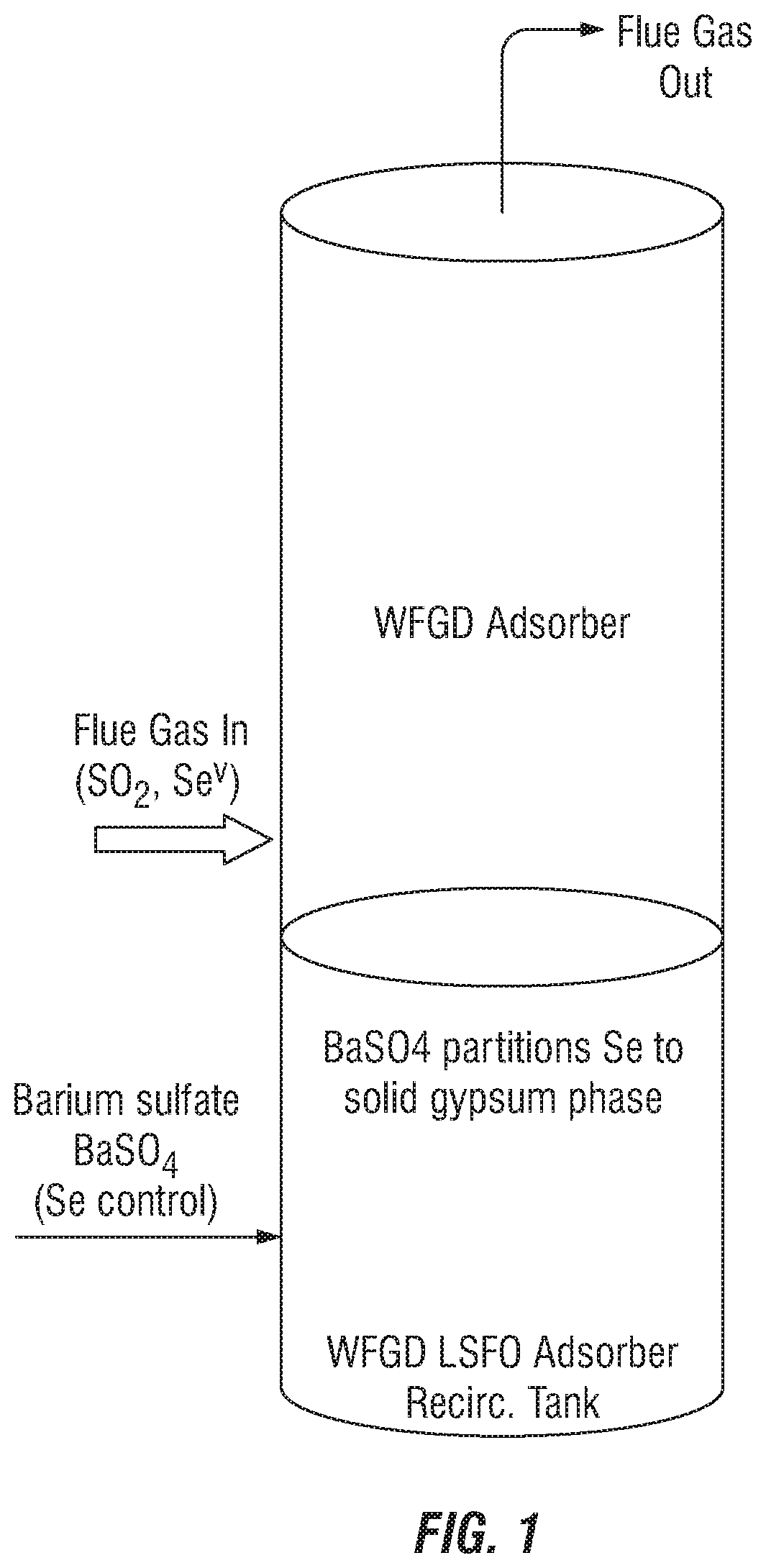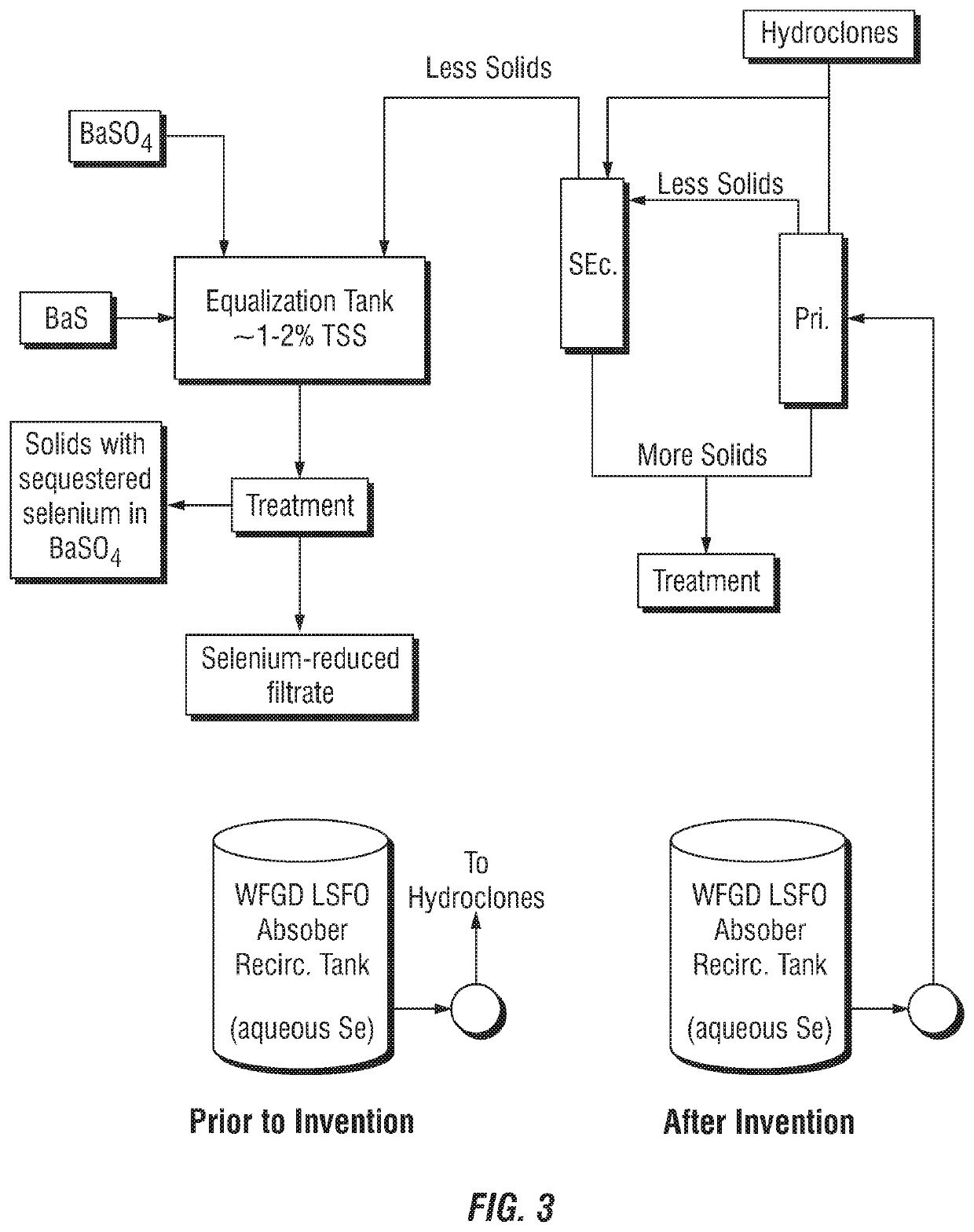Control of aqueous arsenic, selenium, mercury or other metals from flue gas
- Summary
- Abstract
- Description
- Claims
- Application Information
AI Technical Summary
Benefits of technology
Problems solved by technology
Method used
Image
Examples
examples
[0117]Field: Test Example A—Selenium
[0118]In order to validate the sequestration of the selenium via the effect of the barium sulfide on the phase partitioning of the selenium from the WFGD slurry liquid aqueous phase to the slurry solid phase, jar testing at a full-scale WFGD LSFO system was done. The results of those tests are shown in FIG. 6.
[0119]Samples 1-18 of FIG. 6 reflect what was believed to be three, distinct and separate samples. Samples of slurry from the ART were used to fill two to three 1 liter sample bottles with the slurry from the tank through the bleed slurry line. Samples 1-6 represent the first 2-3 liters of sample taken for subsequent treatment and analyses; samples 7-12 represent the second two to three liters of sample taken a number of hours later after the first samples, and samples 13-18 represent the third two to three liters of sample taken a number of hours after the second samples. Samples 19-24 were a re-do of samples 1-6, since the large discrepancy...
specific embodiments
[0128]The present invention may be implemented in numerous manners at all portions of the conventional flue gas treatment process as shown in FIG. 10 and it is preferred to implement the inventive processes prior to waste water treatment. Some specific embodiments include 1-5 below,
[0129]1. The introduction of barium sulfide, barium bisulfide or mixtures of barium hydroxide and barium sulfide / barium bisulfide into a slurry of at least 1%-3% total suspended solids, and containing certain levels of aqueous species, taken from Se, As and Hg and others, where the slurry liquid aqueous phase includes, but is not limited to, dissolved sodium, dissolved magnesium, dissolved calcium, dissolved chloride, dissolved sulfate, and dissolved bicarbonate / carbonate, with concentrations of dissolved metals such as mercury, iron and others.
[0130]2. The incorporation of a soluble metal sulfide, or a soluble metal sulfide solution, chosen from barium sulfide, barium bisulfide, or mixtures of barium hyd...
PUM
| Property | Measurement | Unit |
|---|---|---|
| Fraction | aaaaa | aaaaa |
| Fraction | aaaaa | aaaaa |
| Concentration | aaaaa | aaaaa |
Abstract
Description
Claims
Application Information
 Login to View More
Login to View More - R&D
- Intellectual Property
- Life Sciences
- Materials
- Tech Scout
- Unparalleled Data Quality
- Higher Quality Content
- 60% Fewer Hallucinations
Browse by: Latest US Patents, China's latest patents, Technical Efficacy Thesaurus, Application Domain, Technology Topic, Popular Technical Reports.
© 2025 PatSnap. All rights reserved.Legal|Privacy policy|Modern Slavery Act Transparency Statement|Sitemap|About US| Contact US: help@patsnap.com



